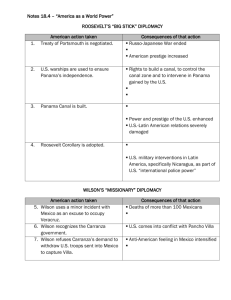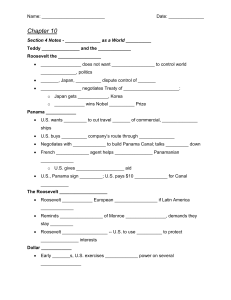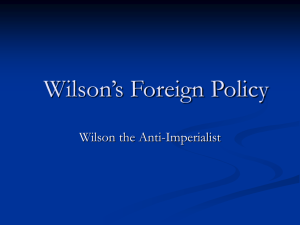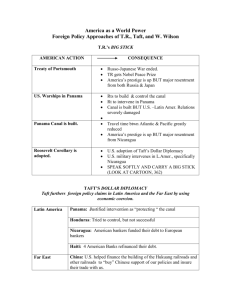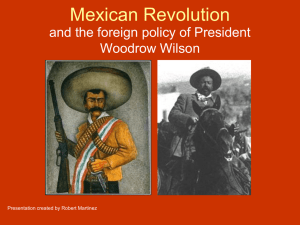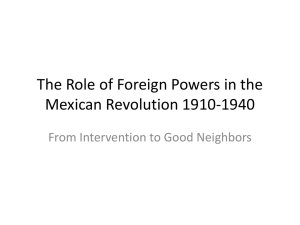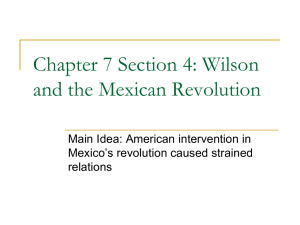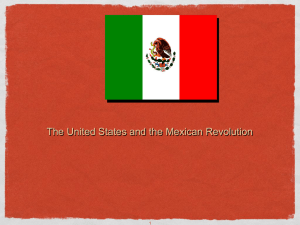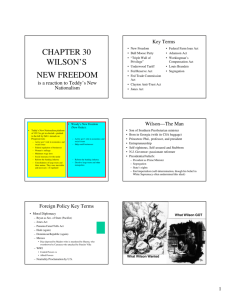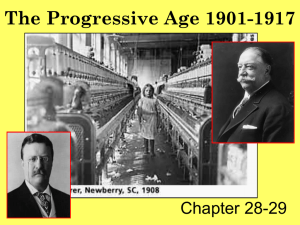W. Wilson`s Missionary Diplomacy
advertisement
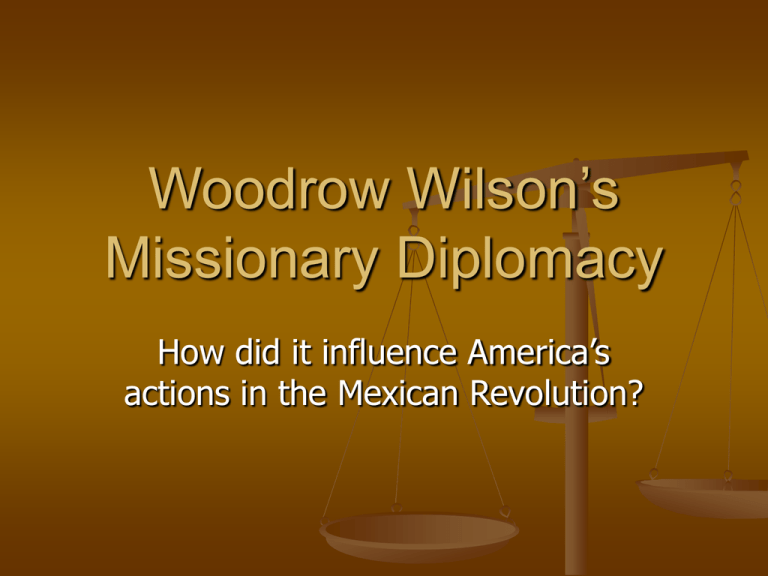
Woodrow Wilson’s Missionary Diplomacy How did it influence America’s actions in the Mexican Revolution? Missionary Diplomacy Idealized by Woodrow Wilson An unwritten addition to Monroe Doctrine Targeted Latin American countries Missionary Diplomacy Stated that American government has responsibility to deny recognition to any Latin American government that is viewed as oppressive, undemocratic, or hostile to U.S. interests Prior to this policy, the U.S. recognized any government that controlled a nation Missionary Diplomacy Wilson’s desire to help Latin American countries was based in Christian duty as much as business obligations American investments as well as protecting American citizens lead Wilson administration to interfere in Mexican Revolution The Mexican Revolution America had invested in oil wells, mines, railroads, and ranches in Mexico under Mexican military ruler Porfirio Diaz Diaz was overthrown by peasants and rebels lead by Francisco Madero Madero overthrown and murdered by one of his generals, Victoriano Huerta (1911) American Response Wilson refused to recognize Huerta government “I will not recognize a government of butchers”—Wilson Wilson stated that the U.S. would not get involved in revolution unless American lives and/or property was threatened America Response Group of American sailors detained in Tampico, Mexico in 1914, although released shortly after detainment Wilson ordered troops to occupy Veracruz During the invasion of American troops in Veracruz, approximately 200 Mexicans and 18 Americans died American Response Huerta government fell soon after American occupation to Victoriano Carranza, a Mexican Nationalist (1915) America quickly recognized Carranza government This recognition angered many Mexicans, including Francisco “Pancho” Villa “Pancho Villa” General under Carranza Did not support rule of Victoriano Carranza Sought to undermine Carranza government, as well as get revenge for U.S support of Carranza Villa outwits the U.S. Pancho Villa promised the U.S. cooperation, but truthfully was angry that U.S. recognized Carranza government Villa killed American miners in Mexico and raided New Mexico and killed 17 Americans (1916) U.S. invaded Mexico to capture Villa, but he eluded the U.S. troops Villa outwits the U.S. U.S troops, led by General John Pershing, were drawn deep into Mexico by the elusive Villa—he was never caught American presence upset Mexican citizens and Carranza government alike and the Mexican government called for U.S. withdrawal U.S. didn’t withdraw from Mexico until beginning of U.S. involvement in WWI
